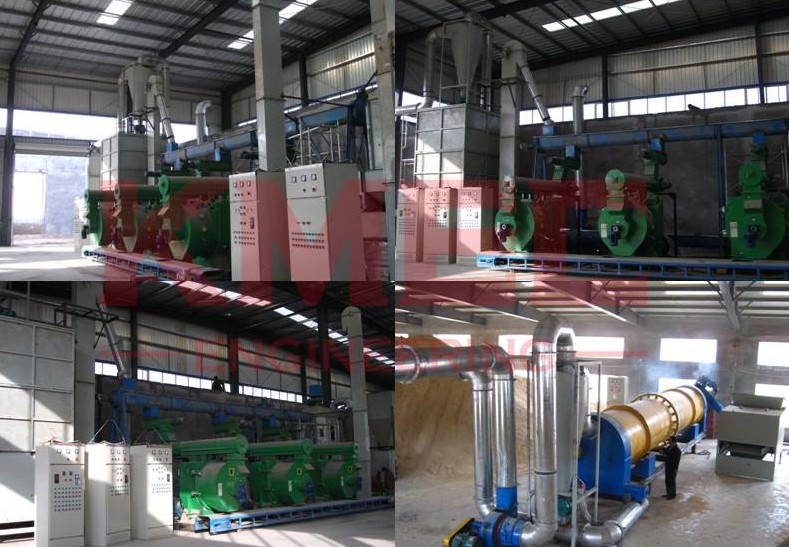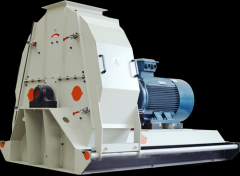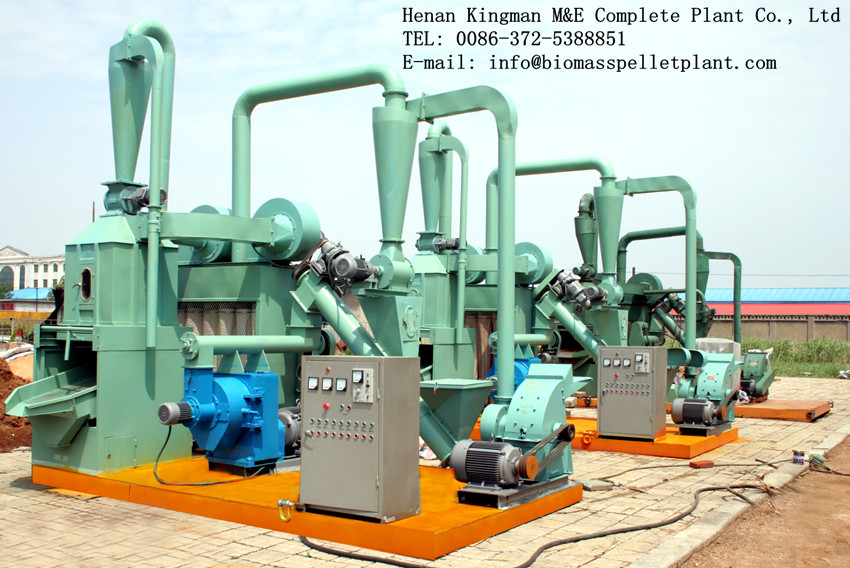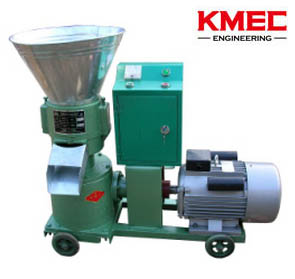FAQ for Wood Pellet Mill
The wood pellet mill machine designed by our factory is a newly-developed renewable energy equipment which can transform any Agro-wastes into bio-fuel pellets with high calorific value It can used almost all kinds of corn straw, straw, rice, wheat straw, wheat shell, bean straw, cotton stalk, medical dregs, tree branches, leaves and wood chips, sawdust, hay etc.
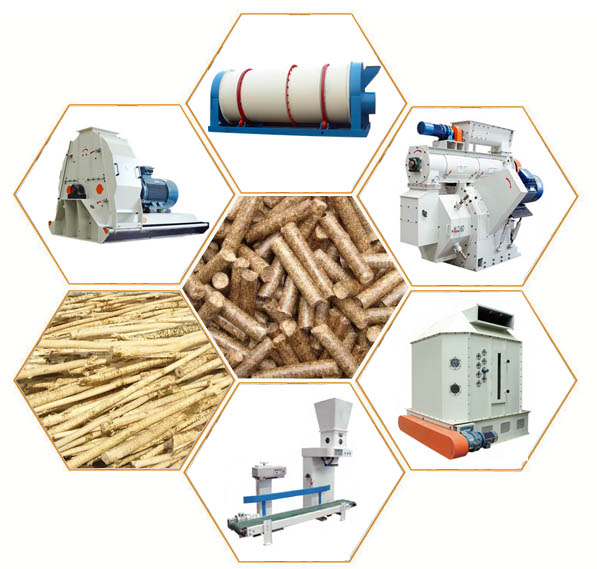
Characteristic of wood pellet mill:
1. Our pellet mill can solve the problem that biomass fuel with crude fiber is difficult to pellet and has bad performance. The main drive of our pellet mill adopts the high accuracy gear driving. It makes gear directly-connecting as the driver, and is with quick-release die fixed by clamps, which can increase the output 15% more than the same type machine with belt-convey.
2. The feeder of our wood pellet mill uses variable-frequency and variable-speed motor to make sure the good quality of the pellet. It is equipped with overload protection device and boost pump lubrication system.
3. Feeder, conditioner and chute of our wood pellet machine made of stainless steel. We adopt international manufacturing technique to provide customers with different kinds of mould or according to customer’s requirements. And our wood pellet mill is long life service, high quality and cost less for every ton.
4. We have different bore diameter of the ring molds for your choice. And the feeder is with excellent ring die, long time service and produce smooth, quality pellets.
1. Q: What is die in a wood pellet mill?
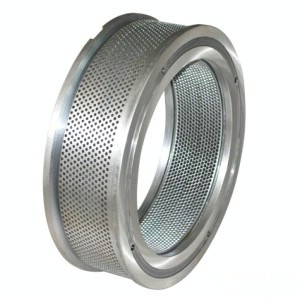
Through precision finishing and vacuum heat treatment, die pores will get high finish degree and long using life. Generally, two kinds of die serve wood pellet mills, namely, flat die and ring die. Since flat die is used for flat die pellet mill, the yield of which is only used domestically for heating, we hereby delve into solely ring die. Within the mold, the honeycomb zone riddled with plenty of pores is the main part in which pellets, the columned biomass products are formed.
Link to Pellet Mill
2. Q: What are press rollers of a pellet mill?
The two big rollers are subject to the die during running, and ultra high pressure will be rendered when feedstock flowing in the chamber. Technically, the roller unit exerts pressing force for material to be pelletized just in the nip space between the die and two rollers. Positions of the rollers can be adjusted respectively yet uniformly to achieve an even pressing strength. And the two rollers are directly connected with oil pump on the back of a biomass pellet mill.
Link to Biomass Pellet Mill
3. Q: How to maintain a die-roller assembly of a wood pellet mill?
Speaking of the press rollers, as we know, a complete pellet plant runs continuously at least for one work shift, that is to say, the die-roller assembly of a pellet mill will constantly rotate for at least 8 hours under high temperature and extreme pressure. Feedstock will be pressed tightly between the die and two rollers in the pelletizing chamber, and temperature of the chamber is consequently on the rise. Strictly, bearings of the two rollers shall be greased every one or at least every two hours to assure the rollers can smoothly revolve. Otherwise, those bearings will be burnt down or deformed (out-of-roundness may happen to the roller surface.) Kingman wood pellet mill will alleviate your concern for that and will rest assure you lubrication on bearings during running can be conducted.
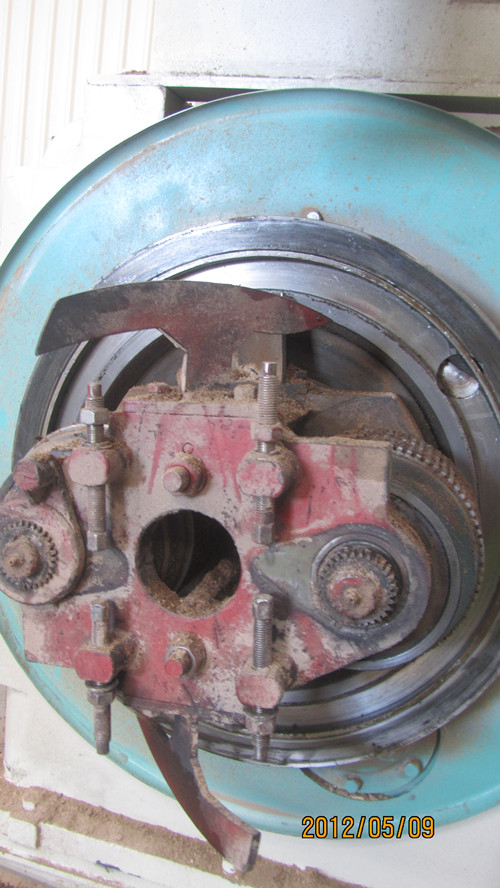
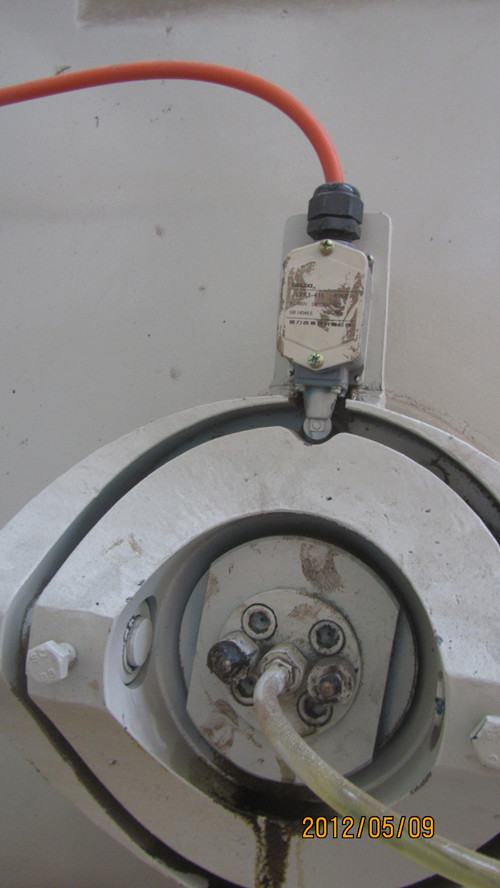
With regard to the die, a new ring die shall be done with grinding-in for at least half an hour before put into official production. Because a new die still has some burs left on the newly drilled pores. Polishing the new is a must. Generally, a proportioned oily mixture (5% fine sand is supposed to be mixed with about 20% pure used oil and some feedstock) can be used as grinding-in material for die pores. However, you shall be warned of the imperative step. Later on, every time before pellet production comes to an end, the pellet mill shall be put with another kind of oily mixture (to this end, fine stand shall not be used but only some feedstock blended with pure used oil. Because long-standing use of fine sand mingled in oily mixture may lead to change of the compression ratio of die pores.) to purge out all material from die pores and to some extent to polish and lubricate the die as well. Otherwise, fed-in material will be tightly stuck in die pores due to the decline of temperature after work and hardly to be squeezed out even if in this regard oily mixture will be used yet in vain. Therefore, oily mixture shall be put into practice for real for about 20 minutes before pellet mill is shut down.
In a nutshell, the maintenance knowhow may not be got the hang of by a green hand once and for all, and operators are entitled to note down a routine checkup and maintenance item list. Also with the help of Kingman, a better pellet mill performance or a highly efficient pellet plant can be obtained.
4. Q: Why should the nip between a die and press rollers be adjusted and how to adjust it?
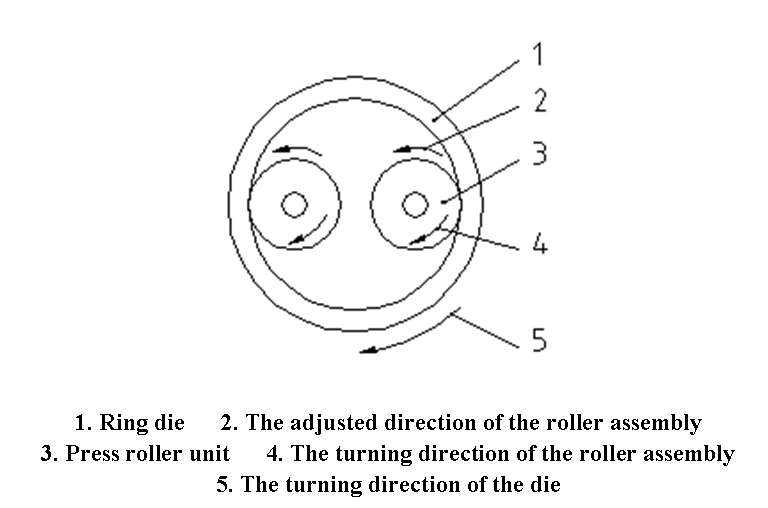
The pelletization yield without adjustment of the clearance cannot meet the due value on the one hand, and material powder will not be formed as in pellets and then swung out of the machine on the other. For the pressure force is not formed without a proper distance.
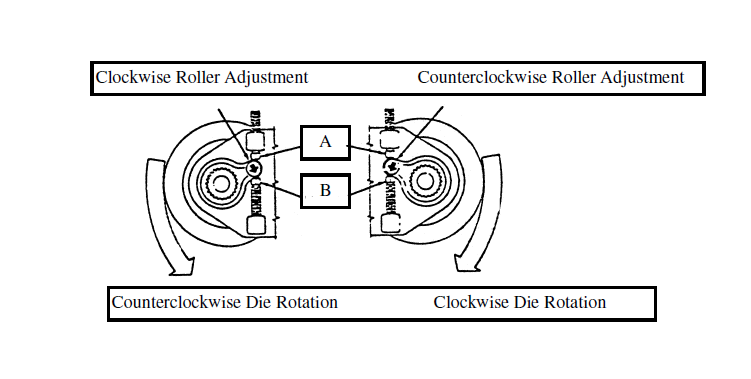
Technically, the clearance is obliged to remain 0.1mm to 0.3mm, but we human beings cannot observe exactly the space with our naked eyes. So seasoned operators of pellet mills may tell you the skip-and-touch status describing die-roller assembly rotation will be quite sufficient. Specifically, when a pellet mill is switched off, the die will be driven at a fast rotating speed, along with which the twin rollers will be forced to spin intermittently as well. The adjustment of the clearance to that end will have the pellet production reach a new high, starkly comparing with the ignorance of clearance fine-tuning.
Link to Pellet Mill
5. Q: What is compression ratio of die pores?
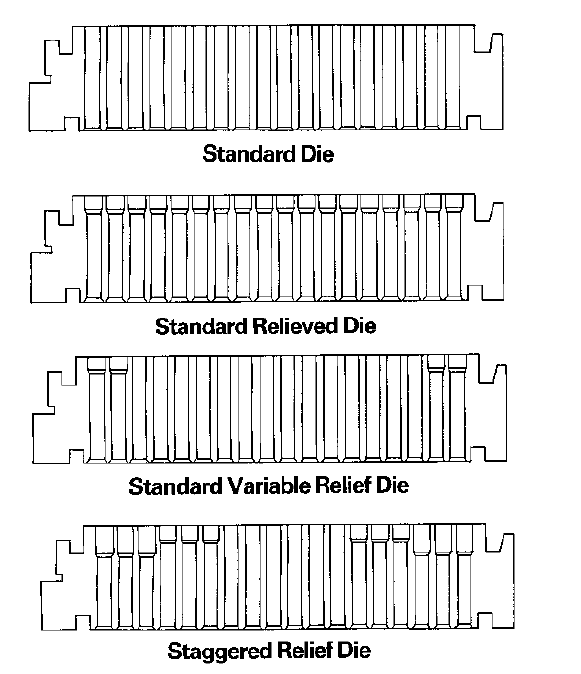
Considerable attention must also be given to the various types of dies used by pellet mill manufacturing industry. Die thickness and hole size varies with the type of product to be pelletized as stated previously. Relieved dies have an enlarged diameter on the discharge side of the hole. Relief length is the distance of the die hole which has a greater diameter than the rest of the hole.
There are basically four types of dies available:
Standard Die---All the holes have the same effective thickness.
Standard Relieved Die---All holes have the same effective thickness, but the discharge side of the hole is enlarged. The primary purpose for this die is to add strength to the die without making the hole depth thicker.
Standard Variable Relief Die---All holes are the same except the two or three outside rows of the die. The number of rows to be relieved varies by die manufacturer. Certain products to be pelletized will have a tendency to squeeze out to the side of the die. When this happens the two or three outside rows become plugged and as much as 25% of the die effectiveness is lost.
Staggered Relief Die---This die basically serves the function as the standard variable relief die except that the two or three outside rows are relieved 1/2?and the next two or three rows are relieved.
However, there are generally two different ways of calculating the ratio at home and abroad. One is the ratio of diameter of the pelletizing pores against efficacious length of the pelletizing pores; the other is that of diameter of the pelletizing pores against (efficacious length + relief area) of the pelletizing pores.
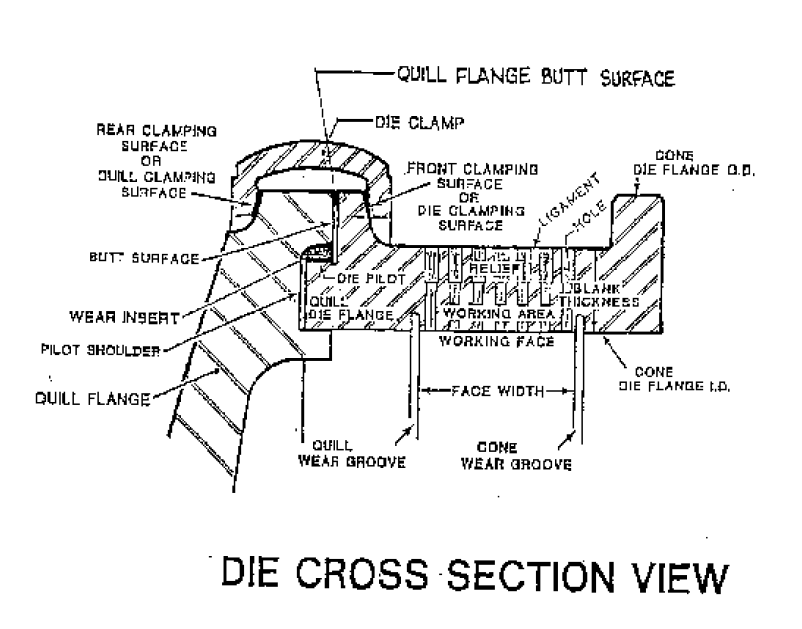
The ratio of diameter of die pore against the length of die pore shall not be ignored, for it influences the pelletizing effect. Specifically, we are supposed to elaborate on diameter of die pore and length of die pore respectively.
- The former refers to several models such as 6mm and 8mm and maybe with others included. However, According to the use scope of biomass pellets, the ones with diameter of 6mm are extensively put into use in fireplaces and pellet stoves domestically because theoretically, they compared to the ones with diameter of 8mm can combust relatively easily while the ones of 8mm are prefered by industrial use such as power plants and heating plants with super power to combust them. Aside from the above, pellets of 6mm in diameter are favored by household users based upon the on-goingly improved regulations upon use of biomass pellets across the whole Europe. And also as per the designs of domestically applied pellet stove and fireplaces, Pellets of 6mm are more popular with European consumers.
- Speaking of the length of die pores, it is acknowledged that the longer the die pore length goes, the longer the pelletizing time of feedstock in the pelletizing chamber will last, vice versa. Therefore, the length of die pores exerts a great influence upon pelletizing effect both theoretically and actually. With regard to this point of view, that different materials demand distinguished die pore lengths will reasonably make sense because material possesses unique cohesiveness from one to another.
Link to Pellet Mill
6. Q: Can a wood pellet mill pelletize agricultural by-products?
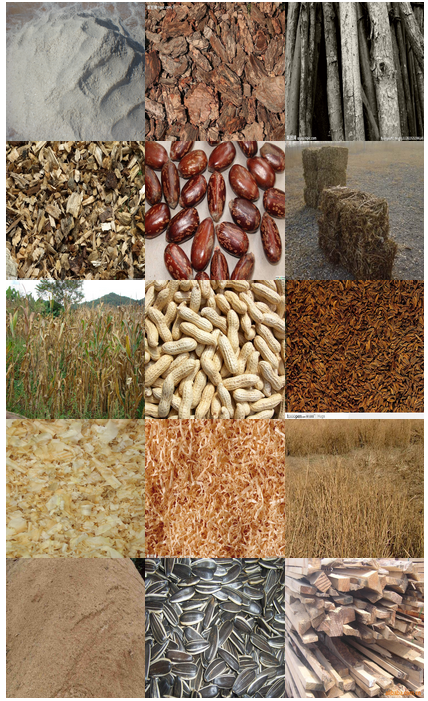
Agro wastes: rice husks, corn cobs, maize stalks, peanut shells, sunflower seed shells, coconut shuck, coffee grounds, straw stalks, Tobacco waste Mustard Stalk, Jute waste, Bamboo Dust, Tea waste, Wheat Straw, Palm husk, Soybeans husk, Coir Pitch Barks/Straws,;
Wood wastes: Raw material resources: timber industry, sawmills, paper industry, furniture industry, building industry and agricultural by-products
The varieties of trees: such as pinewood, birch, spruce, beech, poplar, eucalyptus, maple, tropical trees, subtropical trees and tree species from frigid zone and shrubs.
Size of raw material: wood logs, timber, lumber, tree branches and twigs, tree trunks, wood chips, sawdust, saw shavings, wood powder and shrubs.
Link to Pellet Mill
7. Q: What factors will exert impacts upon pelletizing outcome and yield?
Water content (or moisture content)---Kingman biomass pellet mill can process material with the moisture content about 12% to 15%. (According to the project experience as a rough value range but for specific material type, the water content may be varied and it is also influenced by drying degree in a dryer.)
Feedstock size---The favorable size of feedstock shall be kept about 3mm or 4mm. Oversized material will not be compacted due to the gap between neighboring particles leading to poor cohesiveness; super fine powder may not be pelletized due to the short pelletizing time through die pores.
Material breed---technically, is also various and distinguished. That means lignin content is different from each other. That’s why some materials are easy to be processed while others not. In light of the issue, some hard-to-process material should be blended with binding agent to achieve better result. Kingman is capable of sharing binding agent knowledge with clients, for more information, please contact us.
As a matter of fact, production yield is doomed to plummet due to either of the foresaid factors having been ignored or omitted by operators.
Link to Mixer
Feeding speed---excessive feeding will shorten pelletizing time of feedstock through die pores while slow feeding will lead to the pellet mill running without sufficient load and have yield reduced.
Mold and compression ratio--- mold material is another decisive factor as we mentioned in previous FAQ, good quality mold can smoothen pelletization and be used for a longer time so Kingman to this end adopts high-chromium stainless steel alloy. The other is compression ratio which decides pelletizing time of material in die pores.
Experience accumulation--- whether a pellet plant can achieve higher yield or not also lies in operators and their experience. Seasoned and skilled operators are capable of handling the pellet plant systematically and see the running as a whole rather than stand-alone machine. As we discussed previously, from pulverizing, drying, sifting to pelleting, cooling and packing, the process runs in tandem and all equipment shall be controlled concertedly.
Either factor of the above failing to be attended to will lead the pelletization to a disappointed direction. Only by coordinating them can a successful and smooth production be realized.
Link to Pellet Mill
8. Q: Does a biomass pellet plant demand steam supply and water supply?
Water supply for biomass pellet mill can be offered by Kingman and the water source shall possess a pressure value of about 0.3Mpa-0.5Mpa. A water-spray system is installed on the conditioner of a biomass pellet mill just in case that feedstock through dryer has been over-dried due to poorly manual control of drying. We, nonetheless, would like to give clients some tips or warnings of using water supply. Because short-term rabblings via paddles of the screw shaft in a conditioner will fail to mix sprinkled water with feedstock sufficiently. The water-spray solution is short-lived.
Impressively, Kingman pioneers biomass equipment manufacturing and usher in biomass mixer to retrofit biomass pellet production design and complete plants will then be advanced. The waster supply can be done through the mixer prior to pellet mills.
Link to Pellet Mill
9. Q: Why does Kingman would like to put mixer into practice for a biomass pellet mill and how to put the mixer in a biomass pellet production line?
Link to Mixer for Biomass Pellet Plant
We hereby would like to share with the clients the knowhow. There are conventionally several factors impacting pelletizing outcome which have been given previously. Among them, consistent moisture content of feedstock supply means a lot to a constantly stable running of pellet mill. Otherwise, neither will the pellet quality be good nor the pellet mill performance will be steady. Aside from the above, from time to time, some feedstock with less cohesiveness may be capitalized on by clients or at least two different kinds of materials will be mingled together as feedstock. Therefore, a material mixer will way much improve the blending level of material and binding agent or between materials. Mixer offer by Kingman together with a baffle bin in sequence will be placed before pellet mill to assure smooth running of the latter.
Link to Pellet Mill
10. Q: What are Advantages of Biomass Pellets?
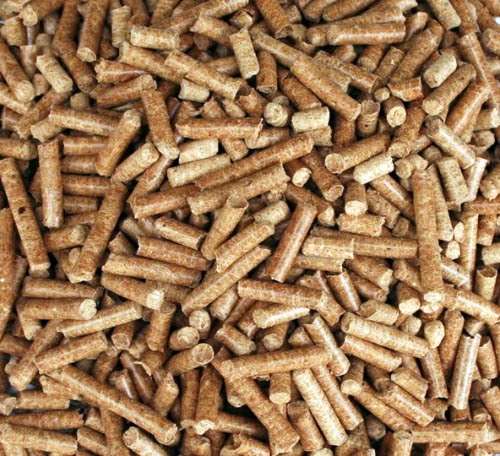
Biomass pellets as a renewable fuel possess a variety of edges in a stark contrast with conventional fossil fuel and pristine fuel.
- High thermal value
- Simple handling
- Carbon dioxide neutral fuel
- Reduced transport costs
- Homogenous and manageable fuel
- Environmentally friendly emissions
11. Q: What are the matters which operators shall pay attention to for running a pellet plant?
Pre-startup Preparations
1.Lubrication shall be applied sufficiently into the big reducer of the pellet mill (for direct gear-driven model of pellet mills) or check up the tightness of belts of main motors(for direct belt-driven pellet mills).
2.All bearings shall be applied with grease.
3.Oil pump on the pellet mill shall be filled up with sufficient grease.
4.Wood blocks, gravel and other impurities shall be kept away from the ring die cavity.
5.Iron scrap stuck on the magnetic separators shall be cleaned away routinely.
6.Wires and cables in all control cabinets shall remain free from rapture, damage and color change, and all terminals shall stay tightened with normal working voltage.
Lubrication (8 hours per work shift)
1.The clearance between roller and ring die shall be adjusted per shift into the skip-and-touch status of rollers as the ideal for running;
2.At least more than half a cup of oil shall remain for operation;
3.Lubrication period: manually, 20 pumps per hour for each nipple; automatically, 10 pumps per hour for each nipple;
Nipple hereby referred to as the ones on the roller assembly connecting with bearings inside. There are two nipples as the front ones in the die cavity and another two as the tail on the back of the pellet mill. During its running, the two at the tail shall be used to pump the extreme pressure and high temperature lithium base grease in to lubricate bearings in the roller assembly. Otherwise, bearings will be swiftly burnt out due to high running temp. Therefore, lubrication upon the bearings shall be done in due time.
4.Lithium base grease shall be applied to the roller bearings prior to the adjustment of two press rollers;
5.Oil shall be added sufficiently into all reducers.
Note: Iron scrap and foreign matters shall be removed from magnetic separators every time the line is shut down, and all motors shall be cleaned upon the surface; Besides, jammed die pores and fine iron scrap in the pelleting chamber shall be purged out.
Packaging tips
1.Packing scale or bulk bagger shall be inspected upon compressed air supply, weighing scales and normal working status. Lubrication should be conducted in due time.
2.It is suggested that pellet discharge can be done when 2/3 of the pellet surge bins are full of pellets.
3.Pellets shall be packaged after being cooled.
4.All pellets in both of the surge bins should be discharged before work ends.
Feedstock feeding tips
1.Prior to feeding, moisture content of the feedstock shall be routinely kept at certain suitable point. Besides, proportion of the mixed material shall be appropriate (if more than one kind of feedstock will be put into practice).
2.If a combination of hardwood and softwood is needed as feedstock, they shall be mixed proportionately and evenly, in particular, the water content should be homogenous for stable pelletization.
Checkup and maintenance
1. Clearance between the ring die and two press rollers shall be adjusted properly and lithium base grease shall be applied to roller bearings per hour.
Adjustment methods of the die-roller gap: open the machine door and dismantle the cover hood of ring die by loosening the fastening bolts. Material remnants in the pelletizing space (namely space between the ring die inwall and two rollers’ surfaces) shall be cleaned away. Loosen nuts of the two long bolts to rotate the two shanked wheels for die-roller clearance adjustment, specifically, the gap can be narrowed down by following the arrow sign on the wheel, otherwise, the gap will be widened. If the above can not be done, the roller may have been installed wrongly. The clearance for pelletization is quite pivotal. Too big is as bad as too tiny. Technically, the gap shall be kept at 0.05-0.3mm to get the rollers to spin in the skip-and-touch status following the ring die rotation. The above status should exclude feedstock stuck inside. The importance shall be attached to fastening nuts of long bolts after the clearance adjustment is done.
2. All bolts and nuts of transmission parts shall be tightened prior to startup.
3. Ring die will be abraded every time the whole line runs. The die-roller gap shall be adjusted in due time and also according to material hardness change (e.g. proportion of hardwood to softwood).
4. Clogged pores of the die and any other impurities like iron scrap shall be purged out immediately.
5. Paddles of the forced feeder shall be pointed at the same angle and direction and nuts on them shall be tightened.
6. All exhaust system including pipes and bags shall be cleaned up routinely.
7. Some maintenance tools should be available at hand, such as jimmy bar, wrenches and other spare parts of components.
Operating points of the pellet mill
1. Feedstock moisture content is of paramount significance for production yield. The more homogenous and uniform the water content remains, the better. Higher water content will adversely result in overloaded running and low throughput, and also some components are likely to be damaged; lower content may lead to pellet deformation or even no pellets can be formed, also as a waste of time and energy. Therefore, the operator shall keep an eye on changes in the moisture content of pellets and adjust it accordingly. Ideally and suitably, the moisture content for pelletization is the one with which freshly extruded pellets bear some slight fissure.
2. After 3 or 4 work shifts (8 hours per shift), ring die pores shall be checked out in case some have been choked with carbonized material. Given the situation, the clogged pores can be soaked and rinsed by using diesel after the machine is stopped. It is suggested all pores be penetrated in diesel for about 8 or 10 hours and then raw material can be conveyed into the machine in an attempt to break through the pores.
3. 200 or 300 tons yield later for production, the ring die should be inspected upon the pore relief section, aka. the horn mouth part of the pore. It is supposed to be polished by the ring die repair machine to keep the die compression ratio consistent, otherwise, both production output and stability of the pellet mill will be badly impacted.
12. Q: What may cause abnormal sound and strong vibration of the machine and what factors should be taken into account?
2)Uneven feeding caused by abrasion upon the anchor scraper; the scraper shall be renewed.
3)Either combined work of new ring die and old press rollers or of old ring die and a new pair of rollers; it is suggested a new ring die be compatible with a new set of rollers.
4)Improper die-roller clearance; the gap shall be readjusted.
5)Unstable running caused by a combination of new roller and old roller or by severe roller abrasion.
6)Inappropriate feedstock formula (mixed proportion); the mixture ratio should be consistent.
7)Vapor generated in the pelleting cavity may trigger unstable running; vapor shall be emitted in due time, namely, cooling system for pellet press air lock and for pellet press-fan should be turned on promptly.
8)Impurities and foreigner matters stuck in the pelleting cavity; clean them away.
9)Bearings on the main shaft of the pellet press have been worn out; a replacement can be used.
Link to Pellet Mill
13. Q: Herewith are some failures you may run into during running a pellet plant project and we hereby also share with you the causes and solutions which may hint you to get out the troubles you are trapped in.
1)Improper die-roller clearance
2)Uneven material distribution in the pelleting cavity by abraded anchor scraper
3)Moisture content of feedstock is less uniform and homogenous
4)Improper mixture ratio of feedstock
5)Improper size of feedstock
6)Unstable feeding speed
2.How to handle the situation that the pellet mill fails to be started up?
1)Power supply shall be kept normal and steady.
2)Shear pin shall be intact.
3)Travel switch shall be in position.
4)The door shall be latched tightly.
3.More powder less pellets produced from the machine
1). Feedstock is quite dry; adjustment of moisture content.
2). Improper compression ratio of the die; the ratio shall be enlarged.
4.Color and luster of pellets may be not homogenous due to:
1)Inconsistent or incomplete mixed moisture content;
2)Abraded ring die for example subpar smooth finish of die pores;
3)Improper feedstock fineness and homogeneity;
5.Solutions of severe die pore clogging
1)Diesel penetration to lubricate the clogged pores and purge blocked material out by using some oily mixture or feedstock.
2)Hand drill can be used to unblock pores alternatively but misoperation may result in die damage.
6.When is the driving felly of a ring die supposed to be renewed?
1)Centering pin or lock bolt of the die may easily get broken.
2)Gap between the die and the felly is too small or even both of them contact each other.
7.Some problems of the ring die may be triggered due to:
1)Either too short or too long fixed bolts causing damage to the die;
2)Dirt and fouling stuck in the bolt hole;
3)Damaged drive felly or hold hoop;
4)Rollers contacting the die too tightly;
5)Wrong adjusted direction of the eccentric shaft;
6)Slantly installed ring die;
7)Overwork of the die;
8)Overload upon the die.
8.The die may be ruptured due to:
1)Less strength or less thickness of the die;
2)metal scraps falling into the pelleting cavity (such as fallen bearing ball or nut or other iron scraps);
3)Insufficient die-roller clearance;
4)Abraded clamp surface of the die or damaged flange.
Link to Pellet Mill
14. Q: What are pellets bent and even with too many strips of fissure?
Solutions: to beef up the pressing strength, the compression ratio may be edged up so that density and hardness of pellets will be reinforced, besides, the cutter-die distance should be shortened; alternatively or additionally, some binding agent is necessary in terms of the tough-to-pelletize material, namely, the interior binding force of material will be improved, for instance vegetable oil (in case of environmental contamination) or pure and clean used machine oil (at lower cost yet probably rendering environmental pollution to some extent).
Link to Pellet Mill
15. Q: What may cause the main shaft wobbling and how to deal with it?
2)Fit clearance between spline and spline fitting yawns.
3)Hole clearance between shear pin and the pin bush or between pin bush and pin boss yawns.
4)Deformed main shaft bearing component or even the bearing is damaged.
5)Out-of-round degree of the inner die pore ≥0.3;
6)Different clearances from the die to the two rollers.
Solutions: 1. the main shaft should be tightened, namely, remove the end cover on the back of the pellet mill to check up whether the spring inside has deformed. If necessary, the spring should be renewed. (The installation position and quantity of the spring should remain the same as before.) And then tighten the end cover and check up the main shaft running condition.
2. Shim inside can be either added or reduced according to the running of the main shaft. Wobbling running may indicate one piece or even more pieces of shim should be removed or added.
After the completion of adjustment of the main shaft, clearances from the die to the two rollers should be equally adjusted. Otherwise, pelletizing process and current will become unstable. Worse still, the main shaft may be dragged into wobble status.
Link to Pellet Mill
16. Q: What are main reasons for tough pelletization and low yield?
Given a ring die having been used for a while, horn mouth of the pore on the die inner surface, namely, the tapered hole shall be checked up upon worn-out condition, so shall the two rollers. The ring die repair machine is used to polish the die pores. As for rollers, they should be renewed. Die pore smooth finish exerts a great impact upon pellet yield.
Under the circumstance of ring die contacting rollers so tightly, the ring die service life will be shorten. But too long distance will lead to roller slip and lower production output. So the skip and touch status for two rollers following the rotation of the die is important.
Wet feedstock may cut down the yield too.
Anchor scraper position can be adjusted to optimize material distribution in the pelleting cavity during feeding and pelleting period. Otherwise, pelletization efficiency and stability will decrease.
Link to Pellet Mill
17. Q: Why should knives be adjusted within a pellet mill?
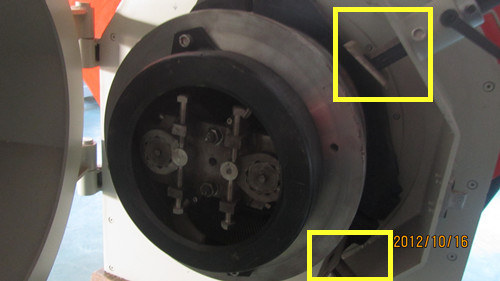
The cutting blade is to section squeezed column material into pellets. Dull knives produce more fines at the die. Knife inspection should be made every shift. The knife adjustment is dependent on the desired length of pellet, die speed, and thickness. One knife is provided for each roller. The upper knife cuts for the left hand roll and the lower knife for the right hand roll. Two knives are used when there is sufficient extrusion at each roller to produce the desired length pellet. When making cubes, the knives will be adjusted away from the die as far as possible or removed. You will then use a special sickle-type cube knife or a breaker bar located above the discharge gate to regulate length. You will be instructed as to the desired length of each pellet or cube by Kingman instructor.
Link to Pellet Mill
18. Q: Why shear pin is quite important for a pellets machine?
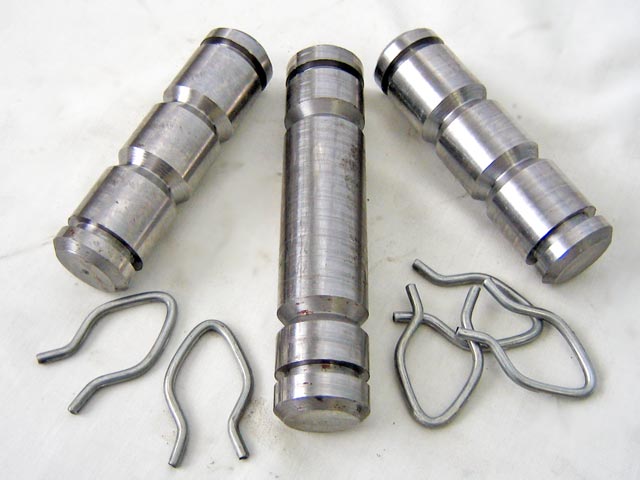
Fortunately, shear pin under the circumstance will be given a big play. Specifically, the main shaft rotation will impose the shear pin to spin from the stand-still status and the shear pin will break off automatically to protect pellets machine, in particular ring die and press rollers from being crushed. But no need to worry about shear pin, it can be replaced with a new one and the pellets machine can work pretty well all over again without any side-effect influence. Because shear pin is uniquely designed to protect pellets machine from damages and it is a quick-wear part within pellets machine. Therefore, some shear pins will be offered to you when Kingman delivers you pellets machine or pellet plants. The prices of shear pins can even be omitted and Kingman can give away if you are going to take our machines. Besides, shear pin is not easily broken unless some emergency happens. So you should ensure cleaning of raw material shall be done well prior to pelletization, which has also been emphasized by Kingman, for pelletizing is an entirely systematic process, we should take care of it just as much as we do of our kids. Kingman would like to share more operation and maintenance knowledge with clients and friends here. Apart from what we have shared, please feel free to contact us if you have some troubles met in the process of operating and maintaining.
Link to Pellet Mill
19. Q: How to start a biomass pellet plant?
20. Q: Why is it important and necessary to put into use a mixer within complete pellet plant?
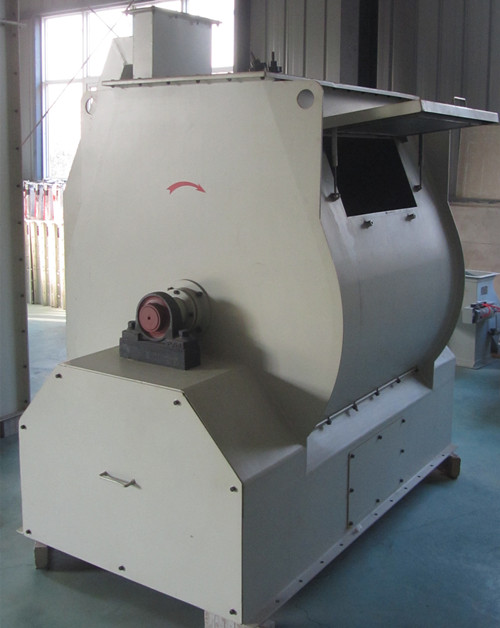
1. As we know, to achieve smooth pelletization and maximize production yield, we are supposed to ensure the steady performance of pellet mill which can be observed as per electric current, running sound, pellet appearance,pellet quality and pelletizing temperature of pellet machine. But the unstability of pelletization may result from poor treatment of raw material, namely, at times indicating unfavorable less mixing of feedstock. For example, different types of raw materials are mingled together if you possess abundantly various materials and desire to mix them for pelletization. Because of the differed contents of lignin and fibre, some of them presumably being softwood while the others hardwood, without complete mixing can pellet mill not achieve the best performance, even resulting in choking or clogging of material in pelletizing chamber within pellet mill which can be observed apparently based upon current indicator, running sound and inspection of pellet quality. Even though the varied materials can be mixed to some extent within crusher or hammer mill or dryer, yet they above-mentioned machines are not professional helping hand for it.
2. Aside from the factor of application of various materials, when materials with different moisture contents may be mixed together sometimes. For instance, it is quite likely for you to mix one with the water content of 50% into the other with 30%. However, dryer is capable of torrifying material with uniform and even moisture content per unit time with certain hot air input, namely, the temperature of fixed thermal value. Furthermore, the flow of the mixed material through drying system is fixed within the certain period unless you adjust the speed of rotation of the dryer, either slow it down or speed it up. However, the fact that you mixed materials with different moisture contens is inevitable. Therefore, the different materials should be mixed completely to make the mixture uniform and even in moisture content, in a bid to steady the work of pellet mill. As a result, not only can a smooth performance and high yield of pelletization can be confirmed, but also the service life of pellet mill can be prolonged and the maintenance costs can be slashed favorably for you. Otherwise, corrosion and abrasion upon machines will be execerbated sooner rather than later and you have to invest more in maintenance.
Link to mixer now
3. Another important reason for adoption of a mixer is to blend material with some binder due to the low cohesiveness of material per se.(If you read previous articles, you will comprehensively know what other factors influence pelletization.)With regard to binder, the commonly used are vegetable oil, clay, starch, oil, or wax. However, what is worth being mentioned is a binder should be applied proportionately. In this regard, we design and manufacture mixers with spray system as well capable of putting liquid binding agent into practice. Either way, both liquid and solid binder can be used without doubt.

In summary, the importance of application of a mixer should be taken into account. As for detailed information, you are also welcome to contact us. We will deliver you a most suitable plan to start a pellet plant.
Link to Pellet Mill
21. How to make wood pellets
Link to how to make wood pellets
22. How to make a choice between large scale pellet mill and small pellet mill
If the raw material is enough and the place has easy access to electricity, the large scale pellet mill is suitable. Or the small scale pellet mill is suitable.A large capacity transformer with strong power should be equipped with the large scale pellet mill. For many regions, the transformer with 220KW capacity can not be satisfied. While the small pellet mill with small power consumption can be satisfied in many regions.Large scale pellet mill has stable performance comparing with small pellet mill if the power consumption of large scale pellet mill can be meet.
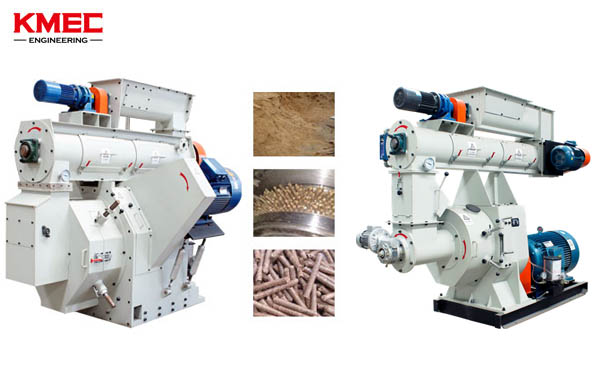
Two sets of small pellet mills have their own advantages. If one of them has failures, another one can be worked continuously without delaying the operation. If the raw material has troubles or pellet plant need to be built separated in different places, it can be used separately.
In general, which one is best between the large scale pellet mill and the small pellet mill? The manufactures suggest that the large scale pellet mill has more stable performance if condition is permitted. Our company produce high efficiency sawdust pellet mill and it is our company’s first domestic patent product with our painstaking researching. The machine has absorbed the essence technology of foreign pellet mill with the features of unique design, reasonable structure and durable etc, which has meet the international standard. This product are fit for compress the material which are difficult to compress and form, like rice husk, sunflower shell, peanut shell and other fruit shells , tree branch, tree trunks, tree barks and varied wood residues; various kinds of crops straw, rubber, cement, ashes and varied industrial material. The sawdust pellet mill can be applied in the biomass pellet fuel plant, power generation station, wood processing plant, fertilizer plant and chemical plant etc. It is an ideal compress and densification equipment with small cost, quick returns and no risk. Welcome to purchase our products.

